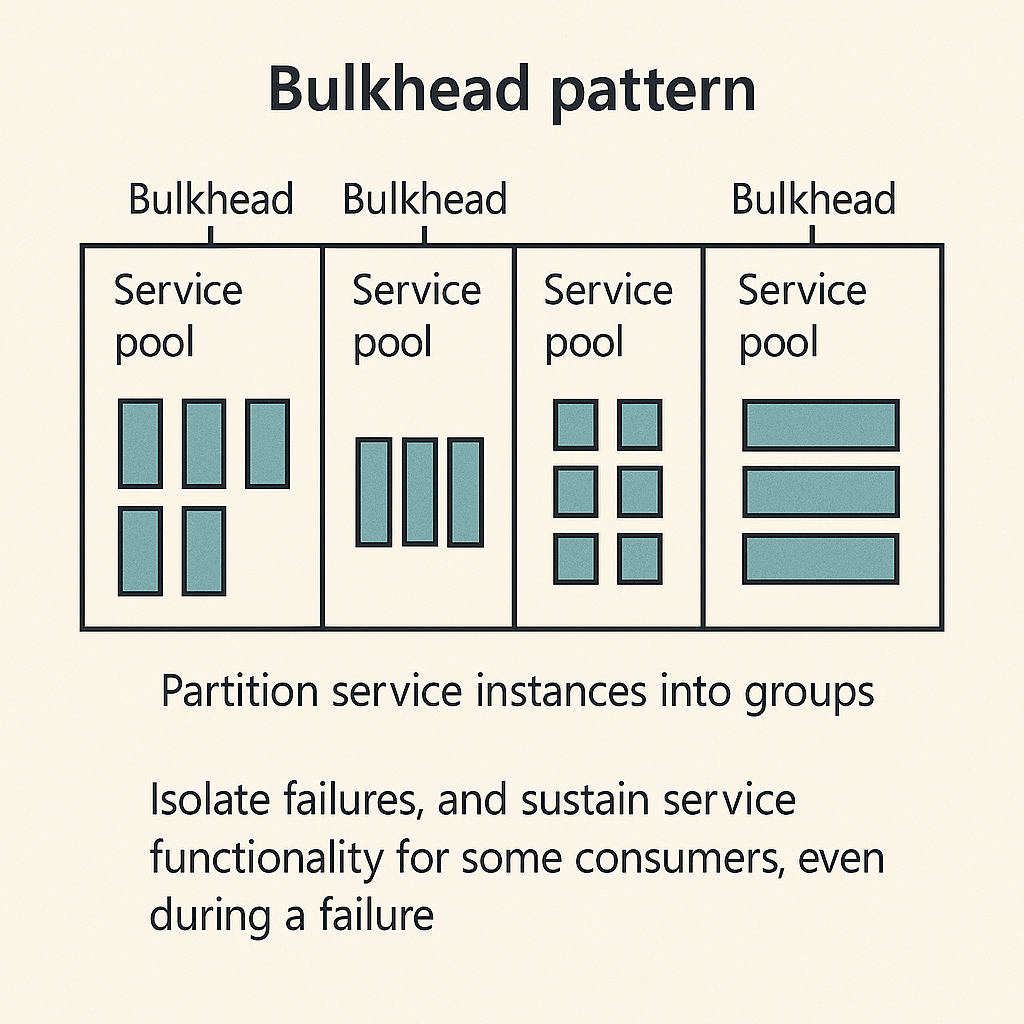WAF Bulkhead Pattern
June 10, 2025•248 words•2 min read•
azure
design patterns
reliability
security
performance efficiency
self healing

| Category | Description | WAF Description |
|---|---|---|
| What | A pattern that isolates elements of an application into pools so that a failure in one does not impact others. | Enhances reliability by preventing cascading failures and increasing fault isolation. |
| Used with | Microservices, backend APIs, task queues, database connections, or compute resources that can be separated into isolated partitions. | Supports operational excellence and reliability through isolation and improved failure recovery strategies. Consider combining bulkheads with retry, circuit breaker, and throttling patterns to provide more sophisticated fault handling. |
| When | When you want to ensure that one component's failure or overload doesn’t bring down the entire application or system. | Promotes resilience and ensures graceful degradation during failures, aligning with the reliability pillar. |
| Not Suitable For | Lightweight applications where isolation complexity outweighs benefits, or for services with minimal risk of resource exhaustion. | Could introduce unnecessary architectural overhead if misapplied; avoid when service reliability is already low-risk. |
| Related To | Circuit Breaker, Retry pattern, Load Leveling, Failover pattern. | Circuit Breaker pattern, Retry pattern, Throttling pattern |

A basic implementation of the Bulkhead Pattern can be found here.
The full WAF description of the pattern can be found here.